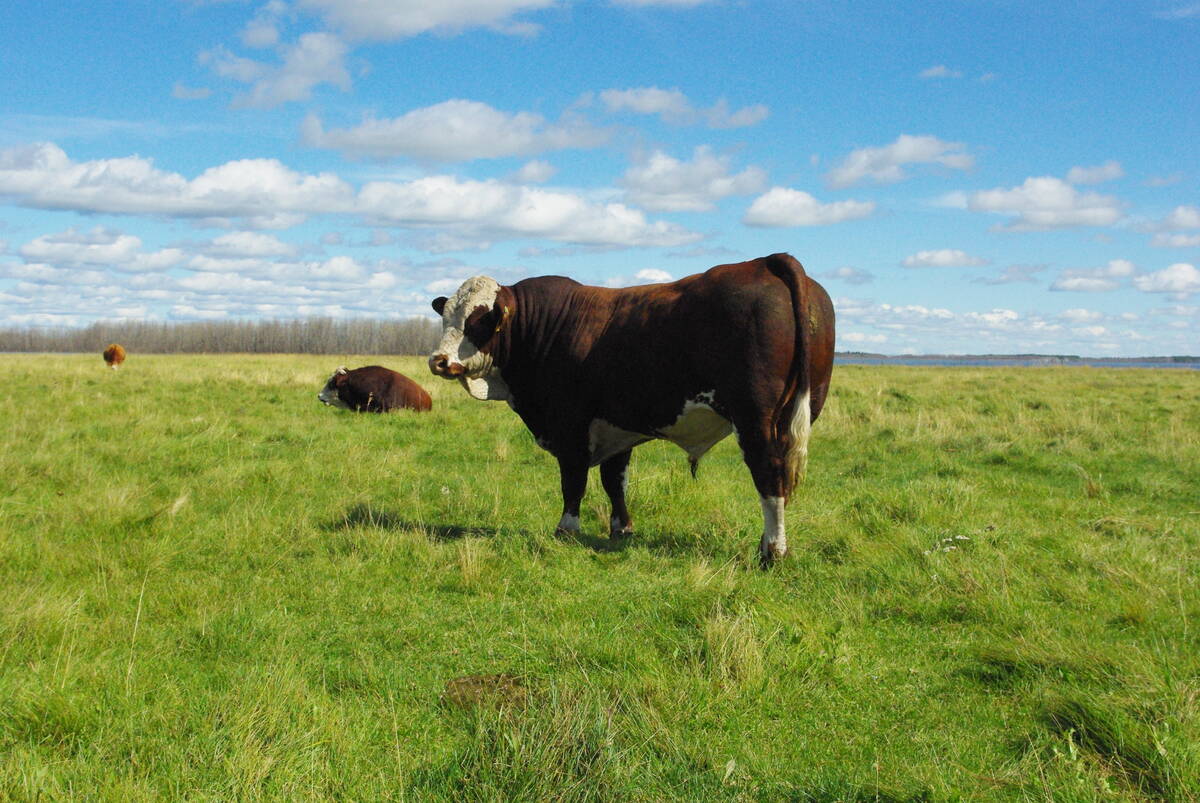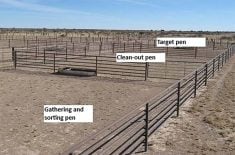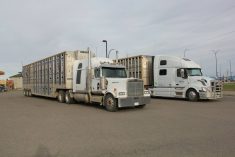Jake bought a yearling Simmental bull from a local breeder to cross with 20 first-calf Hereford heifers.
The bull came from a line known to have low birth weights. Jake, impressed with weaning weights in fall sale yard receipts realized by other producers, wanted to introduce some Simmental into his existing herd’s bloodlines. The first breeding season went well, and Jake wanted to keep the bull for a second year.
However, the bull came off pasture slightly lame. Jake diagnosed the right hind lameness as foot rot and treated the lame bull with long-acting tetracycline twice without any improvement.
Read Also

Quebec pork company calls for transparency around gene-edited pigs
Quebec-based pork company duBreton is calling for transparency around meats from gene-edited pigs on concerns that a lack of mandatory labelling will confuse consumers, and dilute certification claims. The organic sector is also calling for labelling rules.
That fall, after the first frost, the bull slipped on ice in the corral and immediately became severely lame. Jake realized something else had happened and called the clinic for veterinary assistance.
Diagnosing lameness in mature bulls without a hydraulic table and X-ray machines capable of penetrating larger joints is a challenge. This means that field diagnostic skills and experience are the only tools available to many veterinarians.
Most hind-limb lameness in cattle occurs in the foot, but where do we look when we can’t find anything wrong with the foot?
Injuries to the stifle joint commonly cause lameness in breeding bulls. The stifle in large animals is equivalent to the human knee.
Three structures, if injured, cause lameness: the patella, the menisci or inside (medial) or outside (lateral) cartilage pads between the femur and tibia, and the ligaments that hold everything together.
The cruciate ligaments that cross front to back within the joint are primary structures stabilizing the stifle. The anterior cruciate ligament is frequently injured, similar to the anterior circulate injuries in hockey and football players and stifle injuries in dogs.
Cranial cruciate ligament rupture due to a traumatic event is a common cause of lameness in cattle. Bulls specifically have a higher incidence of developing a cranial cruciate rupture secondary to degenerative joint disease along with injuries associated with mounting.
Most often, cruciate damage is associated with being bunted while breeding. Poor conformation increases the incidence of stifle injuries.
They typically manifest as non-specific hind-limb lameness.A physical exam should be used to rule out lower-limb injuries or problems.
With stifle injuries, common signs include joint swelling, pain and crepitus (clicking, popping or crackling sounds, or sensation of crushing tinfoil).
When the bull is lying down, one can initiate a “cranial drawer sign” with an increase in internal rotation. This joint laxity also indicates cranial cruciate ligament injury.
Meniscus injury presents as non-specific stifle lameness and can accompany cranial cruciate injury. The medial meniscus is injured more frequently.
Two common medications can be used to offer relief: meloxicam orally every 24 to 72 hours and flunixin meglumine (Banamine) intravenously every 12 to 24 hours. Both drugs have withdrawal periods that need to be followed if salvage is chosen.
Once we determined the bull had stifle issues, Jake asked about the prognosis. In my experience, bulls with stifle injuries remained high-risk breeders if on pasture where they were required to travel considerable distances, which most breeding bulls are expected to do.
Salvage seemed the best option. Jake sought out a new bull for the next year.
Dr. Ron Clarke is a veterinarian who consults on animal health and disease issues and writes for agricultural and veterinary audiences.

















